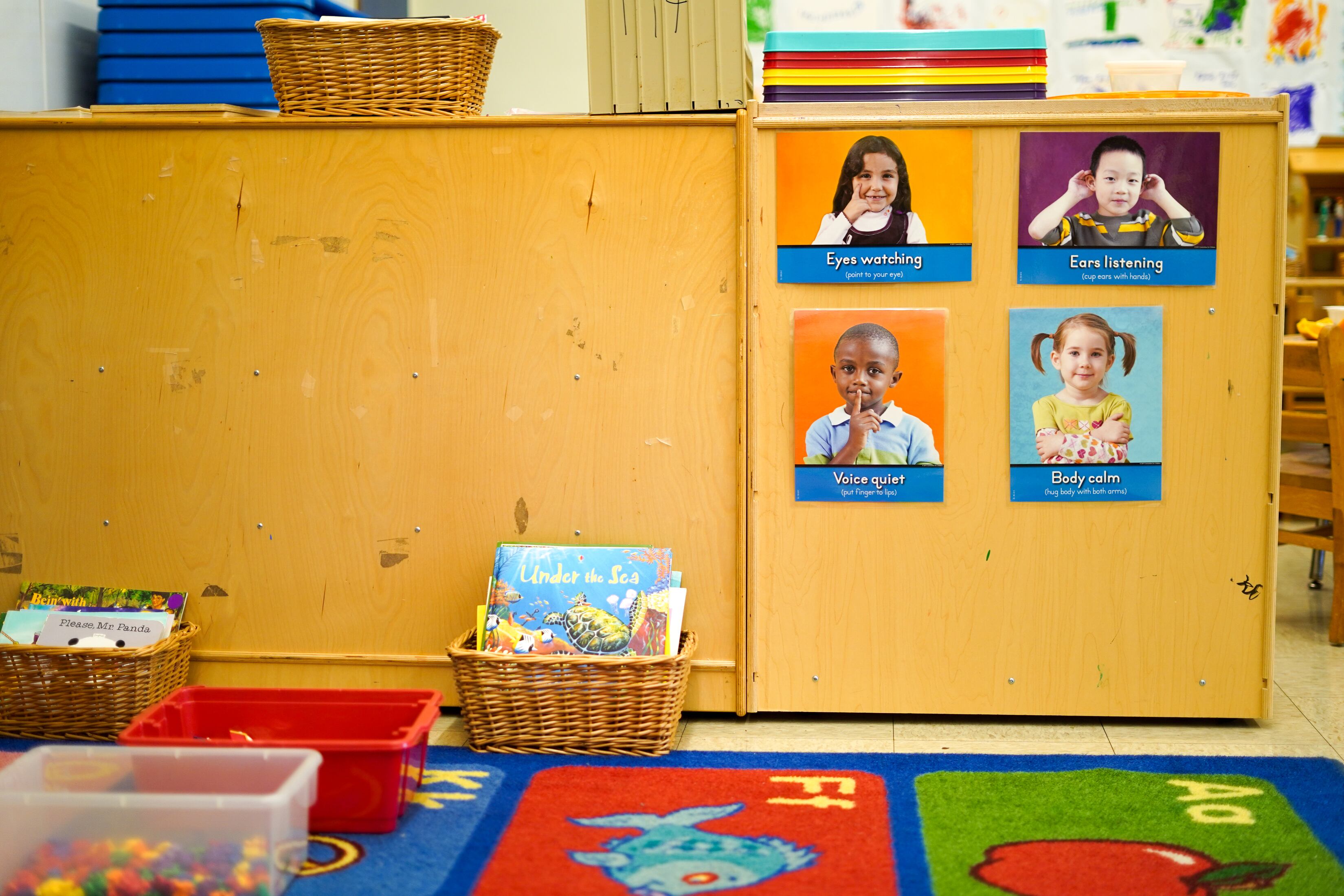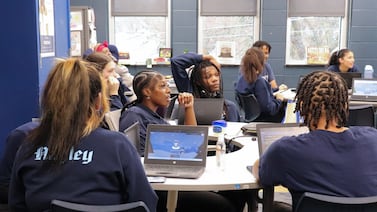As state leaders prepare to launch Colorado’s free preschool program next fall, some educators and advocates fear young children with disabilities will lose out under the new system.
They say 3-year-olds could be rejected for a spot and 4-year-olds could receive less preschool than they’re due because of the narrow way the state asks about children with disabilities on its preschool application form.
In addition, school district officials say that unanswered questions about special education funding and confusion over how two state agencies will work together on the preschool program are a troubling sign for a major new program that will start in a matter of months.
While many early childhood advocates and providers have praised Colorado’s plan to significantly expand publicly funded preschool, there’s ongoing concern that the rollout is being rushed.
“I think the [Colorado Department of Early Childhood] was pushed into something very quickly,” said Callan Ware, executive director of student services in the Englewood district south of Denver.
Ashley Stephen, business services director for the Platte Canyon district, said she’s excited about universal preschool, but also nervous because communication from the state “so far has been a little bit harried and a little bit unclear.”
The 7-month-old Department of Early Childhood is responsible for running the new preschool program, with the Colorado Department of Education overseeing some aspects related to students with disabilities. The program will offer 10 to 15 hours a week of tuition-free preschool to 4-year-olds statewide, with some eligible for 30 hours. Some 3-year-olds will be eligible for 10 hours a week.
Despite concerns about how the preschool program is unfolding, there’s no option to slow things down. In the last 2½ weeks, more than 22,000 families have applied for a seat and thousands more are expected to join them in the coming months.
Amid this surge, advocates worry that some children with disabilities, especially those from marginalized populations, could slip through the cracks as their families encounter confusing terminology, bureaucratic barriers, and uncertainty about their rights.
“I support and appreciate the idea of universal preschool programming,” said Pam Bisceglia, executive director of Advocacy Denver, an advocacy group for people with disabilities. “My question is whether those programs are going to be filled with children of parents who enjoy privilege.”
Preschool application poses challenges
Children with disabilities are supposed to get priority for 10 hours a week of class time at age 3 and 30 hours a week at 4.
But Heather Hanson, whose 9-year-old son was diagnosed with a speech delay as a toddler and later with dyslexia, believes the state’s new preschool program will make it even harder than it is now for young children with disabilities to get the help they need.
The universal preschool application is part of the reason. It asks parents if their child has “an active Individualized Education Program” — a fancy name for a federally required learning plan for students 3 and older with disabilities.
But many children don’t get such plans until after they enroll in school. A young child with a delay may not even have been evaluated or received a diagnosis. Even when children are identified as toddlers, their plan has a different name and acronym than the one on the preschool application.
Hanson, who served on a special education subcommittee during the universal preschool planning process, called the wording on the application “horrible” and “discriminatory.”
“All of those really big words should not be used,” she said. Even the word “disability” might deter some parents.
Lucinda Hundley, who heads the Colorado Consortium of Directors of Special Education, said, “We don’t want to miss children because of an answer on a computerized registration system.”
Risk factors change under universal preschool
Currently, Colorado children with disabilities can be routed to state-funded preschool in one of two ways. Those who have Individualized Education Programs get classes through the preschool special education program. Another group of children who have one of 10 risk factors — such as language delays or poor social skills — qualify for a state preschool program that will end after this school year. Kids in that second group don’t have to have a diagnosis or special learning plan to qualify for free preschool.
But under the new universal preschool program, the state will use fewer risk factors to decide who can attend for free at age 3 and get extra hours at age 4. One of them is the Individualized Education Program. The others consider whether the child is homeless, an English learner, in foster care, or comes from a lower-income family.
Hundley said there’s no way for a parent who suspects their child might have a disability to flag their concern when applying for universal preschool.
Officials from the early childhood department and education department said in an email that state law requires the Individualized Education Program criteria on the universal preschool application. Hundley said it’s unlikely the law would disallow additional criteria that might help capture students with potential disabilities.
Several advocates said the wording should be simpler and more general: “Do you think your child could use some extra help?” or “Do you have concerns about your child’s speech or behavior?
Laurie Noblitt, director of elementary and early learning for the Fountain-Fort Carson district, said her district has fielded calls from parents whose 3-year-old children don’t qualify for free preschool according to the application system. They say things like, “I’m really worried about my child’s language, they’re only speaking in one- or two-word phrases,” she said.
In such cases, Noblitt said, the district helps get the child evaluated and into preschool, but she worries about the families who don’t make that phone call.
Three-year-olds whose parents don’t know how to navigate the system stand to lose out on free preschool altogether and 4-year-olds with disabilities could get just 15 hours a week, half what they’re supposed to.
Hanson said those extra hours can make a big difference since students with disabilities sometimes need double or triple the repetition and exposure to classroom learning compared with their typically developing peers.
The low number of hours offered to 3-year-olds also puts a burden on parents, said Elisa Aucancela, executive director of El Grupo Vida, a nonprofit that supports Hispanic families who have children with disabilities.
Her brother, who has a 3-year-old daughter with a disability, is “still struggling due to the part-time [hours] for 3-year-olds” she said. “It’s a really difficult challenge for some families because what are they going to do for the other half of the time when they need to work?”
Special education funding in question
Several school district leaders worry about how the state is handling $33 million that used to go to school districts to help cover preschool special education costs. They fear the money — which amounts to $36,000 a year in small districts like Englewood and up to $4 million in large districts — now will be mixed into the general universal preschool funding pot, and won’t be set aside for services for students with disabilities.
If that happens, districts will have to use local dollars to cover lost state money since they’re legally required to cover special education services. Hundley said that means funding for staff like psychologists and speech therapists who provide mandated services to students with disabilities gets diverted from other district priorities.
Even though state funding for special education has increased in recent years, districts still cover about two-thirds of those costs out of their local budgets.
State officials estimate they’ll spend at least $33 million — and possibly more — on what they call “general education” seats for students with disabilities. But Hundley said school districts want the state to direct that money specifically to special education services, which is how it has been used in the past.
Beyond money, the uncertainty about funding raises questions about how two state agencies — the early childhood department and the education department — are divvying up overlapping responsibilities.
In response to Chalkbeat’s questions about funding for preschoolers with disabilities, the education department first referred questions to the early childhood department. After the two agencies signed an agreement this week outlining how they’d work together, the early childhood department referred questions to the education department. On Friday, the two departments released emailed answers together. Neither granted an interview.
Ann Schimke is a senior reporter at Chalkbeat, covering early childhood issues and early literacy. Contact Ann at aschimke@chalkbeat.org.






